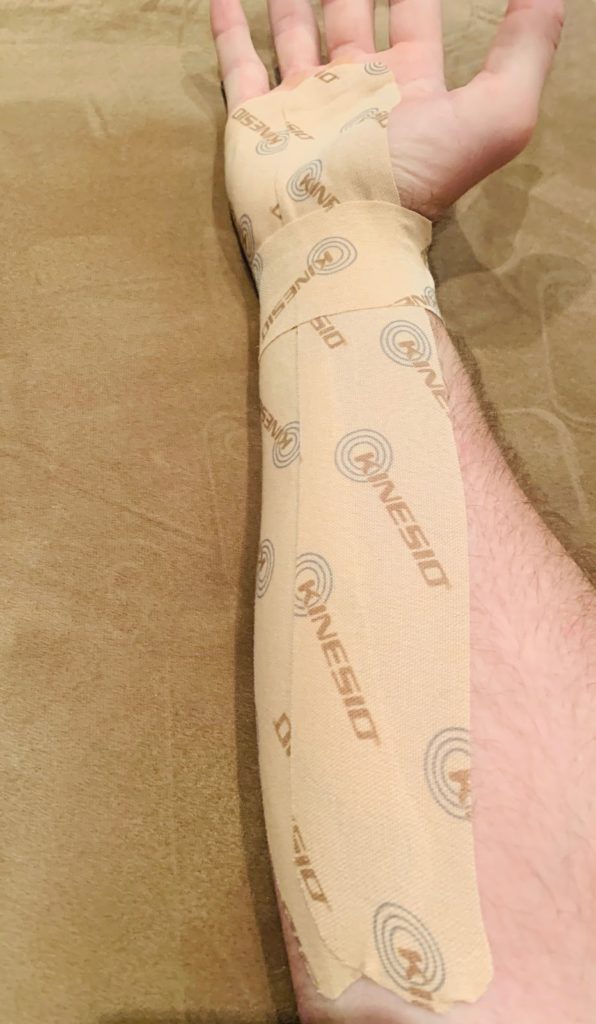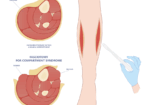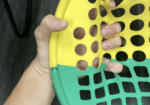Conservative Management of Carpal Tunnel Symptoms: A Comparison of the effectiveness of orthosis wear, kinesiotaping and paraffin treatment.
Filed under Uncategorized
Kaplan, B. M., Akyuz, G., Kokar, S., & Yagci, I. (2018). Comparison of the effectiveness of orthotic intervention, kinesiotaping, and paraffin treatments in patients with carpal tunnel syndrome: A single-blind and randomized controlled study. Journal of Hand Therapy, 32, 297-304.
The Skinny
The authors completed a randomized control trial with three groups to test the effectiveness of kinesiotape and paraffin for carpal tunnel syndrome (paraffin hand therapy). There were three groups in this study:
CON group (n = 36) – Control group with a fabricated nighttime orthosis which holds the wrist in a neutral position.
KIN group (n = 37) – This group was fabricated a nighttime orthosis which holds the wrist in neutral position AND kinesiotape was applied 2 times per week for a 3-week period.
PARA group (n = 37) – This group was fabricated a nighttime orthosis which holds with wrist in a neutral position AND paraffin treatment 3 times a week for a 3-week period.
In the Weeds
110 patients were selected for this study based on the inclusion criteria which included symptoms for less than a year, no previous carpal tunnel injections or surgery, no therapy that specifically targeted CTS in the past 6 months, no co-morbidities such as diabetes and no trauma to the wrist or its surrounding structures. When comparing hand strength, the KIN group showed a greater improvement than the CON and PARA groups at the 3 month mark. The KIN group also showed a significant decrease in pain through the use of the VAS scale from pre-treatment to the 3 month mark with a decrease from 7.1/10 to 2.1/10. Kinesiotape application: Tape was applied distal to proximal from distal palmar crease at 3rd, 4th, and 5th metacarpals to 5 cm short of medial epicondyle with paper off tension. Tape was applied across the wrist with 20% tension across the carpal tunnel with 0% tension on the ends of the tape.

Bringing it Home
The results found that the use of kinesiotape and a nighttime orthotic proved most effective in reducing pain scores in patients with CTS. This gives therapists an evidence based treatment option for conservative management of CTS with the use of the kinesiotaping and splinting. The daytime kinesiotaping allows for functional use of the involved hand without having to wear an orthosis during the day. It is worth noting that kinesiotape tends to stick differently to different clients and usually needs to be reapplied every 3-5 days. That makes this a short-term solution and an adjunct to the treatment rather than the primary method of management.
The treatment provided was very detailed, giving therapists the tools to re-create these methods in a clinical setting. When reporting their results, authors state an improvement in grip strength, but do not include these numbers in their article.. This may be an important statistical number to this particular population as many individuals who have CTS deal with a lack of grip strength. Overall this is a very well written article giving therapists another tool for their toolbox when treating individuals with CTS.
3 Comments
Leave a Comment
More To Read
Exertional (Chronic) Compartment Syndrome of The Hand
By: Tommi Long What is it? Chronic exertional compartment syndrome (CECS) is an exercise-induced condition affecting the muscles and nerves, leading to pain, swelling, and reduced muscle function due to increased pressure and restricted circulation. While most commonly, it impacts the arms and legs, it is rare to happen in the hand(s). CECS is most…
Read MoreShould we still be immobilizing the thumb in scaphoid fractures, or is a wrist-only cast just as effective?
Article:Harper, K. J., Rees, Y., Tan, N. X., Li, H., Fonseca, E. A., Quach, P. G., Lee, G. S., Brayshaw, J.R., & McGarry, S. (2025). Determining the success of clinical outcomes for thumbimmobilization compared to no thumb immobilization in adult non-displaced, non-surgically managed scaphoid fractures: A systematic review. Hong Kong journal ofoccupational therapy. The Skinny:This study…
Read More6 of our Favorite Adaptive Equipment Tools for CMC Osteoarthritis
Individuals struggling with osteoarthritis of the 1st CMC joint usually have difficulty with daily activities and it can become very frustrating. Everyday tasks such as cutting food, opening containers, and donning a button up shirt can become painful and slow. The largest contributor to the overall function of our hand is the thumb. If the…
Read MoreTop 5 DIP Flexion Exercises
By: Tori Rhodes Lately, we’ve had a handful of patients roll through our clinic with pretty significant limitations to DIP flexion. So, we’ve collected a selection of go-to exercises for these individuals. We’ve included a few of those here. From cat bites and fracture sites to mallet fingers and skin grafts, many individuals who are…
Read MoreSign-up to Get Updates Straight to Your Inbox!
Sign up with us and we will send you regular blog posts on everything hand therapy, notices every time we upload new videos and tutorials, along with handout, protocols, and other useful information.







Thank you!
Great Rapid Review!….This is going into practice right away in my clinic!
Awesome! It’s always great to see research go directly into practice.